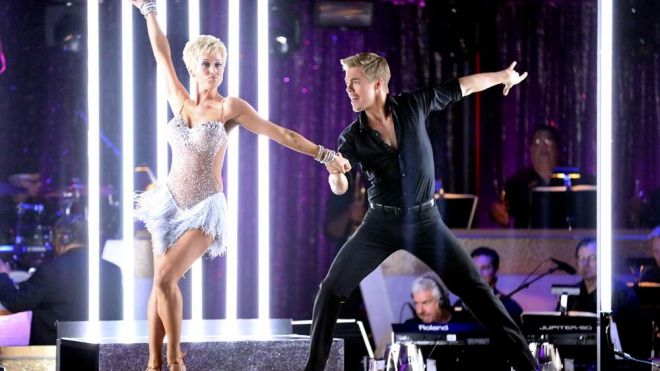Dance fever, but no injuries
The celebrities on Dancing with the Stars have suffered a slew of injuries over the years  – from Jennifer Grey’s ruptured disc to Nancy O’Dell’s torn meniscus. So if you feel inspired to sign up for a dance class after watching an episode, take some precautions. Doctors warn that while the show's contestants may be more prone to injury due to their grueling schedules, beginning dancers can also hurt themselves if they aren’t careful.   Dr. Mike Salata, an orthopedic/sports medicine specialist at UH Case Medical Center in Cleveland, Ohio, shared his tips on how to make sure a night of swing dancing doesn’t land you in the emergency room.   1. Get in shape before beginning a new workout routine If it’s been awhile since you last worked out, log some hours at the gym before trying out a new dance class. “Start on the exercise bike or elliptical to increase your general physical fitness,” Salata said. This will strengthen your muscles and may even help you shed a few unwanted pounds – reducing the amount of impact on injury-prone joints like the knee. “Also, you will just generally increase your cardiovascular reserve so you can do more stuff without getting tired. A lot of times people get hurt when their muscles are fatigued,” Salata said. “So the better shape you are in, the less likely you will be to get injured.” Salata also recommends doing core-strengtheners like Pilates, planks or crunches. “Your balance will be better…and that will help you avoid lower back injuries, as well as (injuries in) the lower extremities,” Salata said. 2. Work with a seasoned instructor Find a class taught by an experienced teacher rather than relying on a DVD or online class. “Being involved with someone who does this for a  living, in terms of an instructor, would be helpful to minimize the risk of doing things the wrong way,” Salata said. Instructors can also help you address any pain you might feel during class, addressing potential trouble spots before they turn into full-blown problems. “Maybe they can modify the way you are doing something,” Salata recommended. 3. Don’t forget to warm up and cool down Stretch both your upper and lower body before and after every workout, Salata advised. “An appropriate warm up and cool down is important,” Salata said.  “Fifteen minutes before and after, you should really try to stretch things out and cool down appropriately. That minimizes risk of muscular injuries.” 4. Feel pain? Stop! If you feel pain beyond normal muscular soreness, ask your instructor if they have any advice as to how to modify your movements. If the pain persists, take a week off to rest. Salata advised treating your injury at home by icing the sore muscle or by taking anti-inflammatory over-the-counter drugs like Advil. “A week or two later, if it feels OK, then you’re probably safe. If your pain returns or is getting close to the level it was at (before), you need more time off,” Salata advised. If pain persists for more than three to four weeks, make an appointment with your doctor. “People get injured because they try to do stuff too fast. They’re not prepared for the activities and are doing it the wrong way; that’s the recipe for disaster,” Salata said.  “Starting gradually and under supervision – that’s really the best formula.”source : http://www.foxnews.com/health/2013/05/13/dance-fever-but-no-injuries/
